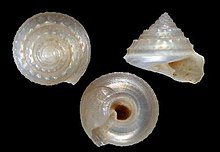타쿠르 (제목)
Thakur (title)타쿠르는 인도 아대륙의 역사적 봉건적 칭호다. 오늘날에는 성으로도 쓰인다. 호칭의 여성 변종은 타쿠라니 또는 타쿠레인이며, 타쿠르의 아내를 묘사할 때에도 사용된다.
학자들 사이에서는 그 기원에 대한 의견이 분분하다. 일부 학자들은 기원전 500년 이전의 산스크리트어 문헌에는 언급되지 않았다고 주장하지만, 이것이 구프타 제국 이전의 인도 북부에서 사용되는 방언의 어휘의 일부였을 것으로 추측하고 있다. 몇몇 학자들에 따르면 타쿠라는 산스크리트어의 원어가 아니라 내아시아의 투카라 지역에서 온 인도 렉시스의 차용어였다고 한다. 또 다른 관점은 타쿠라는 프라크리트어에서 온 외래어라는 점이다.
학자들은 '신', '주님', '영지의 주인'이라는 단어에 대해 서로 다른 의미를 제시했다. 학계에서는 제목일 뿐이며, 그 자체로는 "국내에서 어느 정도 권력을 행사할 수 있는 권한"을 이용자에게 부여하지 않았다는 주장이 제기되어 왔다.
인도에서 이 칭호를 사용하는 사회단체에는 브라만족,[1]: 28 아히르족,[2] 재트족,[3] 라즈푸트족이 포함된다.[4]
어원과 의미
시시르 쿠마르 다스는 타쿠르라는 단어는 "말기 산스크리트" 단어인 타쿠라에서 유래되었다고 말했다.[1]: 28
하카 바하두르 구룽은 타쿠르라는 단어의 네팔어 버전이 타쿠리라고 언급했다.[5]
타쿠르라는 말의 의미는 S. K. Das에 의해 "신"으로,[1]: 31 Blair B에 의해 "주님"으로 제안되었다. 클링,[6] 그리고 H. B. 구룽의 "영지의 주인".[5]
기원
Nirmal Chandra Sinha는 타쿠라라는 단어는 베딕과 고전적인 산스크리트어로 "알 수 없다"고 말했으며 기원전 500년 이전의 산스크리트 문헌에서 언급된 것을 발견하지 못했다고 말했다. 그러나 그는 "황제 굽타스 이전의 많은 북인도 방언에서 이 단어가 유행했을 가능성이 있다"고 제안한다. 신하는 프라카시 부처, 프레데릭 토마스, 해롤드 베일리, 프라보드 바기, 수니티 차터지, 실베인 레비 등 많은 학자들이 타쿠라가 내아시아의 투카라 지역에서 온 인도 렉시스의 차용어임을 시사했다고 지적한다.[7] 신하가 관찰한 것은 다음과 같다.
"남인도에서는 정통 브라만들 사이에서 타쿠라나 타쿠르가 분명히 투카라나 투루스카 배경 때문에 통속적인 용어가 아니라는 점에 주목할지 모른다."[7]
Byomkes Chakrabarti는 산스크리트어인 Takkura가 "late Sanskrit"에서 언급하고 있다고 언급했다. 그러나 그는 타쿠라가 '원래 산스크리트어'라는 것을 의심했고, 타쿠라가 아마도 프라크리트어에서 온 외래어일 것이라는 의견이었다.[8]
사용법
수잔 스노우 와들리는 타쿠르라는 호칭이 "중급이지만 중급 수준의 카스트(caste)를 지칭하기 위해 사용되었으며, 대개는 지상 카스트(caste)를 의미한다고 언급했다. 와들리는 더 나아가 타쿠르가 "라자" (킹)에 비해 "좀 더 겸손한" 칭호로 여겨졌다는 점에 주목한다.[3]
S. K. Das는 thakur라는 단어는 "신"을 의미하지만, 여성의 장인을 가리키는 말로도 사용된다고 언급했다.[1]: 31 브라만,[1]: 28 아히르,[2] 야트,[3] 라즈푸트에도 쓰인다.[4]
일부 학자들은 "타쿠르는 단지 직함일 뿐 소유자가 국가에서 권력을 행사할 권리가 있는 사무실이 아니었다"[9]고 제안했다. 그러나 일부 다른 학자들은 히마찰프라데시 서쪽 지역의 "애완동물 족장"들이 이 칭호를 사용했다고 언급했다.[10]
이 호칭은 암블리아라, 발라, 모르비, 바르소다, 라즈코트 주를 포함한 몇몇 왕족 국가의 통치자들이 사용하였다. 타커의 아들들은 산스크리트어로 쿠마라('왕자')라는 칭호를 부여받았는데, 북부의 쿤와르와 벵골과 남인도의 쿠마르라는 통속적인 용어가 널리 쓰였다.[11]
타쿠르의 지배하에 있는 땅의 영토를 티카나라고 불렀다.[12]
참고 항목
- 다도르타쿠르
- 사르다르
- 차우드하리
- 만카리
- 로하나 성인 탁카르
- 타쿠리, 네팔 왕족 칭호
- 타코레 카스트
- 바부 사헵, 비하르, 자르칸드, 우타르 프라데시에 있는 라즈푸츠(Rajputs)의 호칭이다. 타쿠르와 교환하여 사용한다.
- 타쿠르 (벵갈리 성)
- 달마 타쿠르(Darma Takur)는 라르 지역에서 숭배된 힌두교의 민속신이다.
참조
- ^ Jump up to: a b c d e Das, Sisir Kumar (April 1968). "Forms of Address and Terms of Reference in Bengali". Anthropological Linguistics. Trustees of Indiana University. 10 (4): 19–31. JSTOR 30029176.
- ^ Jump up to: a b Sir Roper Lethbridge (2005). The Golden Book of India: A Genealogical and Biographical Dictionary of the Ruling Princes, Chiefs, Nobles, and Other Personages, Titled Or Decorated of the Indian Empire. Aakar Books. p. 371. Retrieved 27 October 2014.
Born 1839 ; succeeded to the gadi on the death of her late husband, the Kunwar Jagat Singh, 28th October 1867. Belongs to a Dawa Ahir family. Lachman Singh, father of the late Thakur, was originally a Sardar of Jaitpur; but having possessed himself of the territory of Naigaon Ribai, he received a sanad from the British Government in 1807, confirming him in the possession. He died in 1808, and was succeeded by his son, the late Kunwar Jagat Singh.
- ^ Jump up to: a b c Wadley, Susan S. (2004). Raja Nal and the Goddess: The North Indian Epic Dhola in Performance (illustrated ed.). Bloomington, Indiana: Indiana University Press. p. 60. ISBN 978-0253217240. LCCN 2004009434.
Eventually he was awarded the title of rājā (king), although he preferred the more modest "Thakur" (a man of indeterminate but mid-level caste, usually implying a landowning caste, often Jat).
- ^ Jump up to: a b Ellinwood, DeWitt C. (January 2002). "A Perspective on the Western Front by an Indian Army Office on the Western Front". Western Front Association. Retrieved 9 November 2020.
...Thakur (title of respect for Rajput aristocrats whose father is deceased; usually a landowner)...
- ^ Jump up to: a b Gurung, Harka Bahadur (1996). Faces of Nepal. illustrated by Jan Salter. Himal. p. 29. ISBN 978-9993343509.
The term Thakuri is a Nepali variation of the Hindi word thakur, which means 'master of the estate'. Indeed, Thakuris of Nepal are associated with some territory inherited from the days of Baisi and Chaubisi principalities; the term thakurai actually refers to 'fiefdom'. It is said that among those Rajputs fleeing to the hills after the Muslim invasion in India, successful adventurers among them were given the name and status of Thakuri by their Brahman followers.
- ^ Kling, Blair B. (1976). "The Home and the World". Partner in Empire: Dwarkanath Tagore and the Age of Enterprise in Eastern India. University of California Press. p. 10. ISBN 978-0520029279.
- ^ Jump up to: a b Sinha, Nirmal Chandra (1987). "Inner Asia and India Through the Ages" (PDF). Bulletin of Tibetology. New. Gangtok, India: Sikkim Research Institute of Tibetology. 23 (1): 18 – via University of Cambridge.
- ^ Chakrabarti, Byomkes (1992). A Comparative Study of Santali and Bengali. K. P. Bagchi & Company. p. 14. ISBN 978-8170741282.
Mr. Risley has also drawn attention to the fact that the supreme God "Thakur" of the Santali traditions bears a Hindi name derived from the Sanskrit origin "thakkura". But there is much doubt whether "thakkura" itself is an original Sanskrit word. The word occurs in late Sanskrit possibly being borrowed from Prakrit. But if we make a careful analysis of the different languages of the western regions of Asia from Turkish to Bengali we would surely find out traces of similarities of most of these languages with Santali and this will go to show that the tribes had their historical wanderings from the Western part of Asia to the Eastern part of India.
- ^ Sharma, Ghanshyam Datt (1977). Rajput Polity: A Study of Politics and Administration of the State of Marwar, 1638–1749. Manohar. p. 18. ISBN 978-0883868874.
Bose agrees with Dr. Kane (History of the Dharmasastras, iii, 984) that thakur was merely a title and not an office whereby a holder was entitled to wield some power in the state.
- ^ Ohri, Vishwa Chander; Khanna, Amar Nath (1989). "Influence of Rajasthani on Pahari". History and Culture of the Chamba State, a Western Himalayan Kingdom: Collected Papers of the Seminar Held at Chamba in 1983. Department of Languages and Culture (Himachal Pradesh). Books & Books. p. 131. ISBN 9788185016252.
...in the hills refer to a time when petty chiefs bearing the title of Rana or Thakur exercised authority over their iminutive domains...
- ^ Vadivelu, A. The Aristocracy of Southern India, Volume 2.
- ^ Doornbos, Martin; Kaviraj, Sudipta (1997). Dynamics of State Formation: India and Europe Compared. Sage. p. 81. ISBN 978-8170365747.
Rights to land within any particular Thakur domain, the thikana, became complicated by the 1600s.



